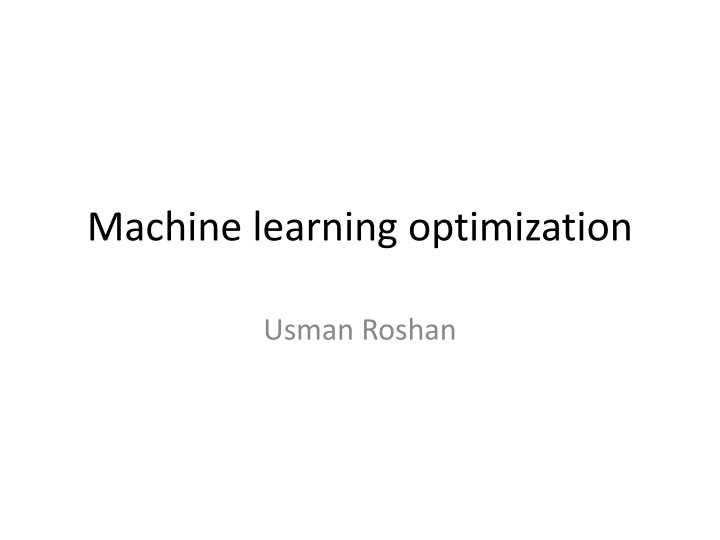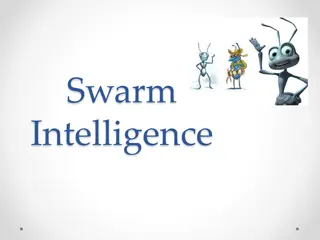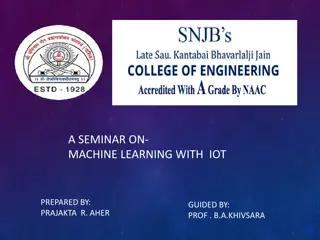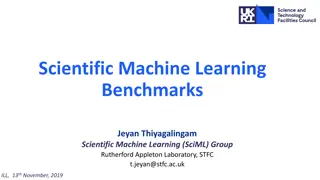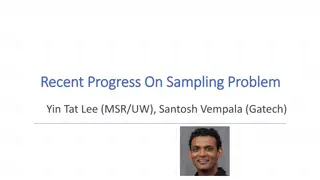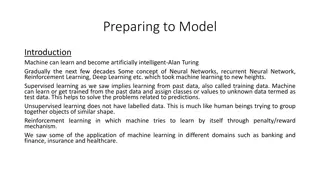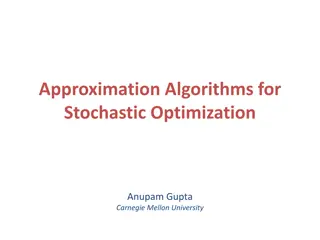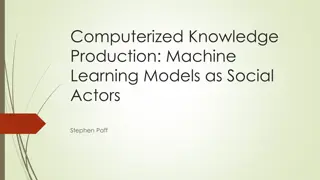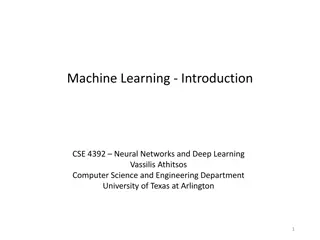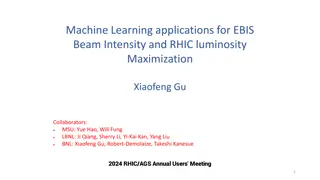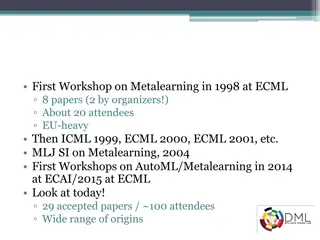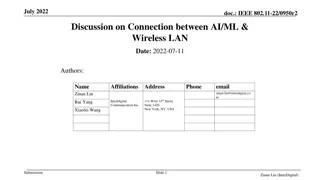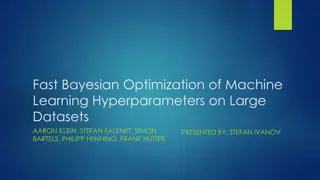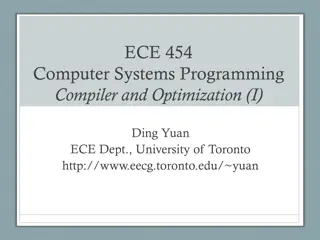Machine learning optimization
Dive into the world of machine learning optimization with a focus on gradient descent, mathematical programming, and constrained optimization. Explore how to minimize functions using gradient descent and Lagrange multipliers, as well as the motivation behind direct optimization methods. Discover the applications of optimization in unsupervised and supervised learning scenarios.
Uploaded on Feb 27, 2025 | 0 Views
Download Presentation

Please find below an Image/Link to download the presentation.
The content on the website is provided AS IS for your information and personal use only. It may not be sold, licensed, or shared on other websites without obtaining consent from the author.If you encounter any issues during the download, it is possible that the publisher has removed the file from their server.
You are allowed to download the files provided on this website for personal or commercial use, subject to the condition that they are used lawfully. All files are the property of their respective owners.
The content on the website is provided AS IS for your information and personal use only. It may not be sold, licensed, or shared on other websites without obtaining consent from the author.
E N D
Presentation Transcript
Machine learning optimization Usman Roshan
Machine learning Mathematical programming optimization for convex functions Comes down to gradient descent Stochastic gradient descent leads to even faster search
Gradient descent Given a convex function f(x,y) how can we find x and y that minimizes this? Solution is gradient descent The gradient vector points in the direction of greatest increase in the function. Therefore solution is to move in small increments in the negative direction of the gradient until we reach the optimum.
Gradient descent example Minimize f(x)=1 + (x-5)2 Derivative w.r.t x is df/dx = 2(x-5) df/dx = F(x) = 2(x-5) Algorithm: =.1 start with a random value of x (e.g. x = 10) prev = f(x) while (!stop){ x = x - F(x) if(f(x) > prev) { stop = true ; } prev = f(x)
Gradient descent example Initialize x = 10, f(x) = 26, prev = 26 Step 1 F(x) = 10, x = 10 - .1(10) = 9, f(x) = 17, prev = 17 Step 2 F(x) = 8, x = 9 - .1(8) = 8.2, f(x) = 11.24, prev = 11.24 Step 3 F(x) = 6.4, x = 8.2 - .1(6.4) = 7.56, f(x) = 7.5536, prev = 7.5536 Step 4 F(x) = 5.12, x = 7.56 - .512 = 7.048, f(x) = 5.19, prev = 5.19
Constrained optimization Most machine learning problems require optimizing a convex function with convex constraints In this case we apply Lagrange multipliers The KKT theorem is their generalization (see handout)
Direct optimization of NP-hard K-means is the classic example for unsupervised learning For supervised learning consider finding the plane that gives lowest number of misclassified points. Why would we want to find such planes? Reduces effect of outliers
How do we directly optimize? Today we look at local search
Local search Coordinate descent: Fix all coordinates wifor I = 1 to d Randomly pick one wiand optimize Make incremental changes in wiuntil there is no change Pick a different random wiand optimize again. Repeat until no change in objective after circling through all wi.
Local minima A major problem for optimizing NP-hard problems How to overcome? Random restarts Simulated annealing MCMC Iterated local search
Results Data: 33 randomly selected datasets from UCI repository Some were multi-class and converted into binary (largest class separated from the others) We created ten random 90:10 splits for each dataset. All model parameters were learnt on the training dataset
Results Average error of three objective functions: w_increment = .01 Margin =14.6%, error only = 23.4% , margin + error = 13.6% w_increment = 100 Margin = 14.3, error only = 15.5% , margin + error = 13.2% liblinear = 12.4% Comparable runtime: both BSP and liblinear finish within seconds but liblinear is faster
